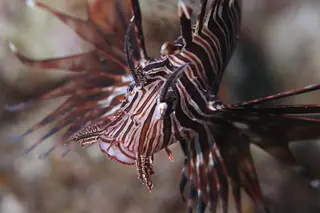Supporting governments, the private sector and civil society to address invasive alien species
Regulating the trade and movement of invasive alien species is the most effective way to prevent their introduction and spread. Once an invasive species arrives to a new area, it is possible to limit their negative impacts though early detection, monitoring and rapid eradication.
The IUCN Secretariat and Species Survival Commission Invasive Species Specialist Group (SSC ISSG) work together to tackle invasive alien species and their impacts at all stages, from providing essential data and expertise to guide policy-making through to action on the ground. We collaborate with regional and national governance, NGOs and local stakeholders.
Knowledge platforms
The Environmental Impact Classification for Alien Taxa (EICAT) is the IUCN global standard for measuring the severity of environmental impacts caused by animals, fungi and plants living outside their natural range. The Global Invasive Species Database is managed by the IUCN Species Survival Commission Invasive Species Specialist Group (ISSG) and the Global Register of Introduced and Invasive Species is an ISSG led initiative. The IUCN Red List of Threatened SpeciesTM also holds information on the impacts of invasive alien species (IAS), and an analysis of how IAS contribute to species global extinction risk can be found here.
Invasive alien species in the European Union
IUCN provides technical and scientific support to the European Commission for the implementation of the European Union Regulation (No 1143/2014) on the prevention and management of the introduction and spread of invasive alien species (EU IAS Regulation).
IUCN has also worked with the European Commission to strengthen the application of the EU IAS Regulation, through creating tools to support the management of vertebrate invasive alien species of Union concern, taking into account welfare implications. This collaboration has resulted in the production of a manual for the management of vertebrate invasive alien species of Union concern, incorporating animal welfare.













